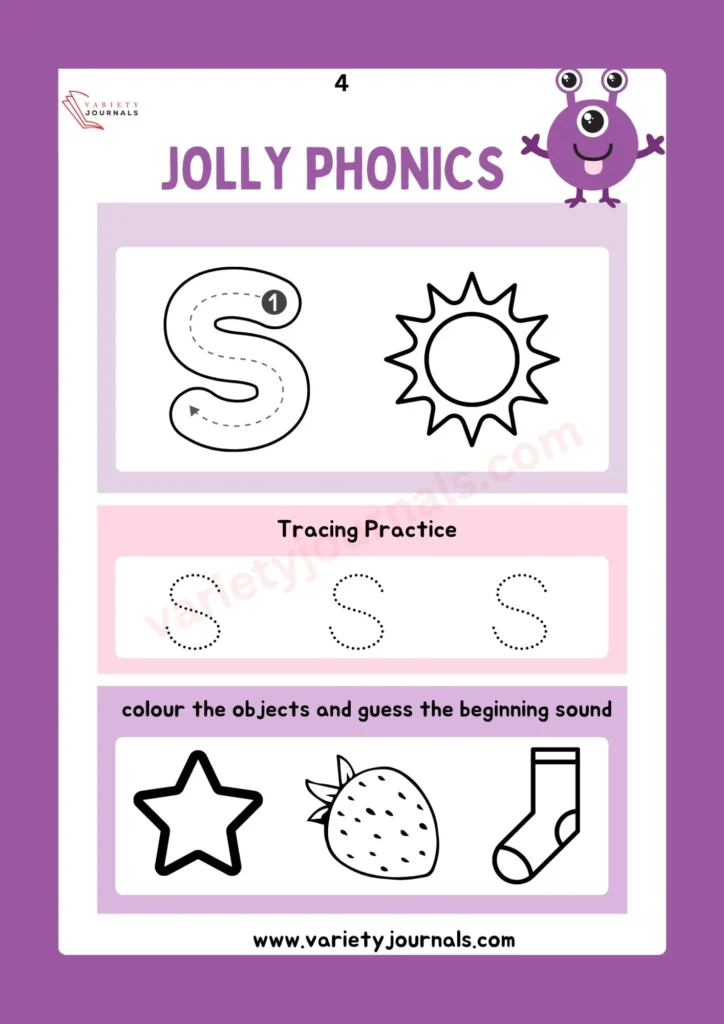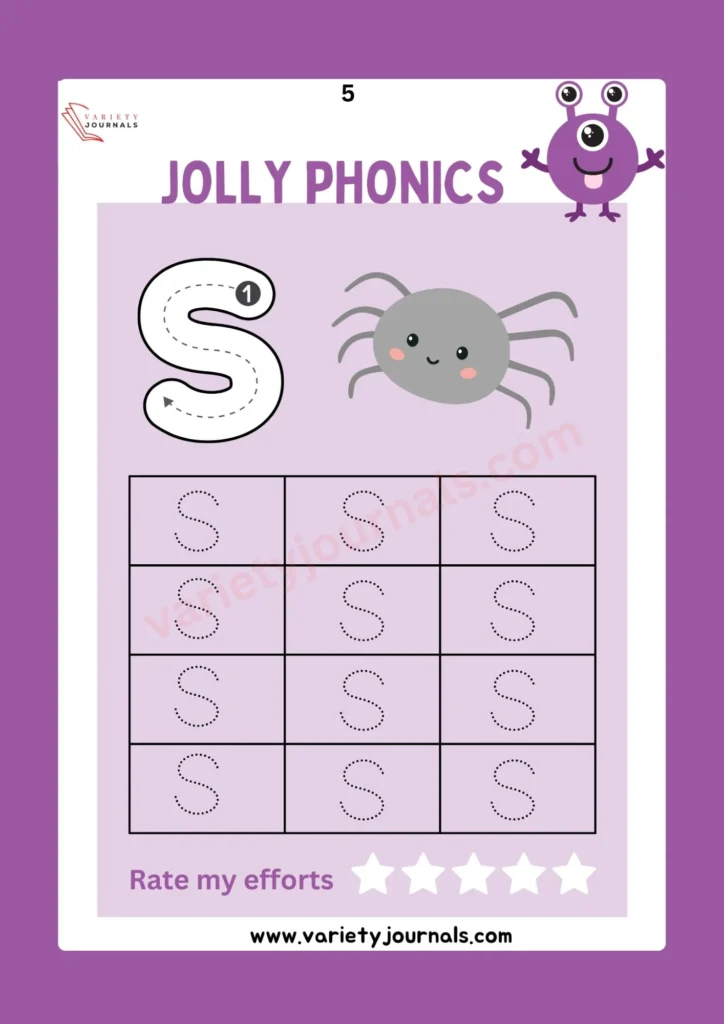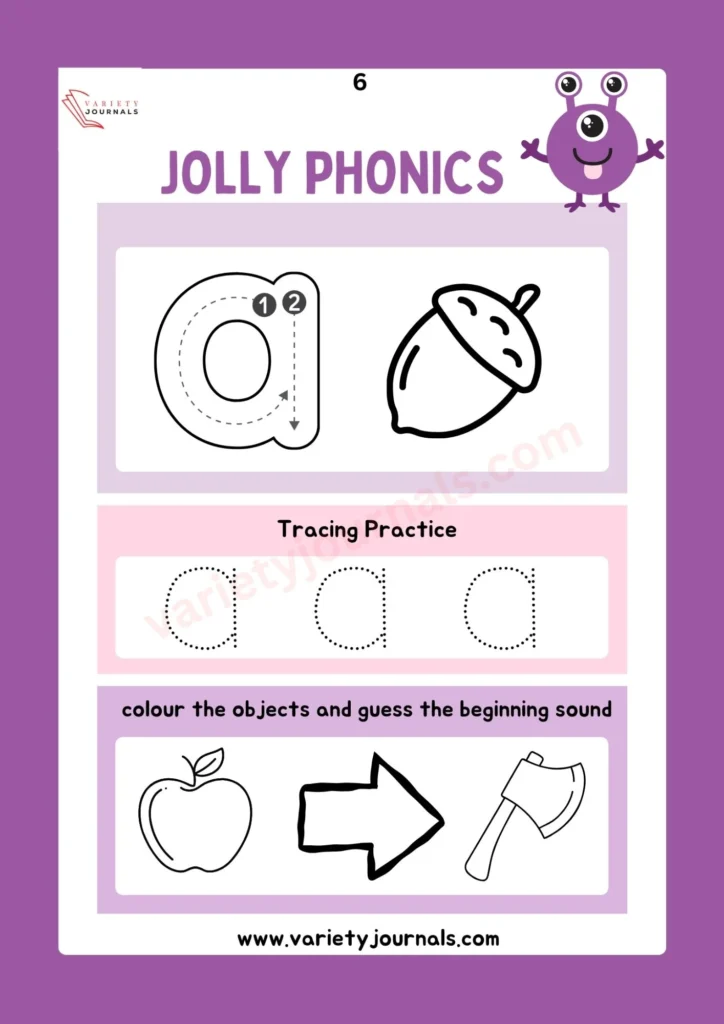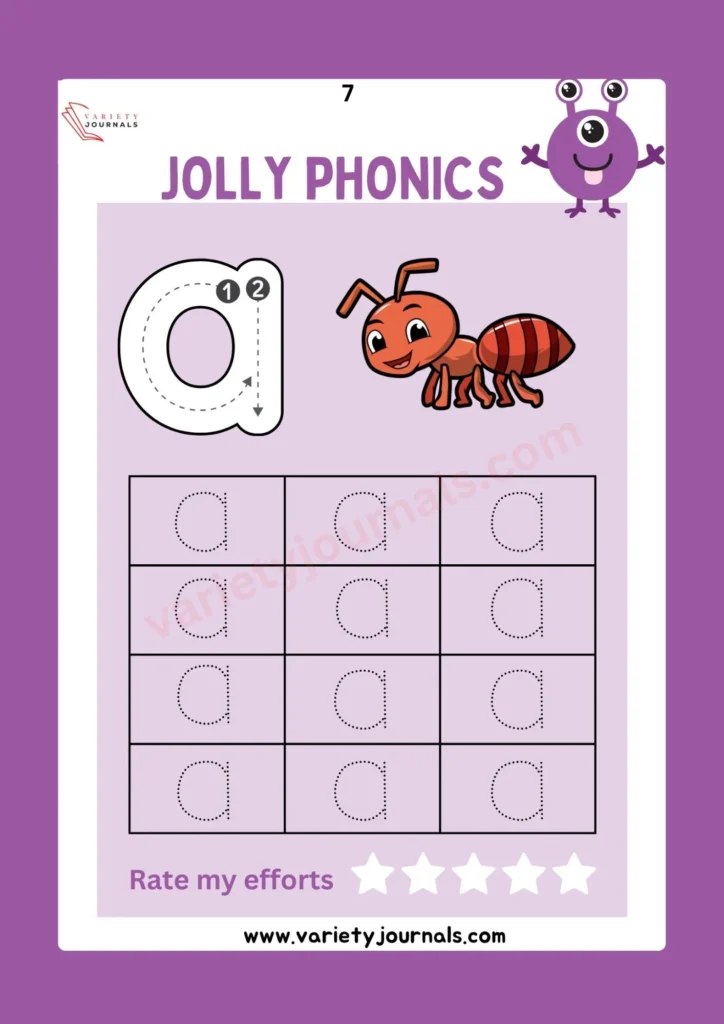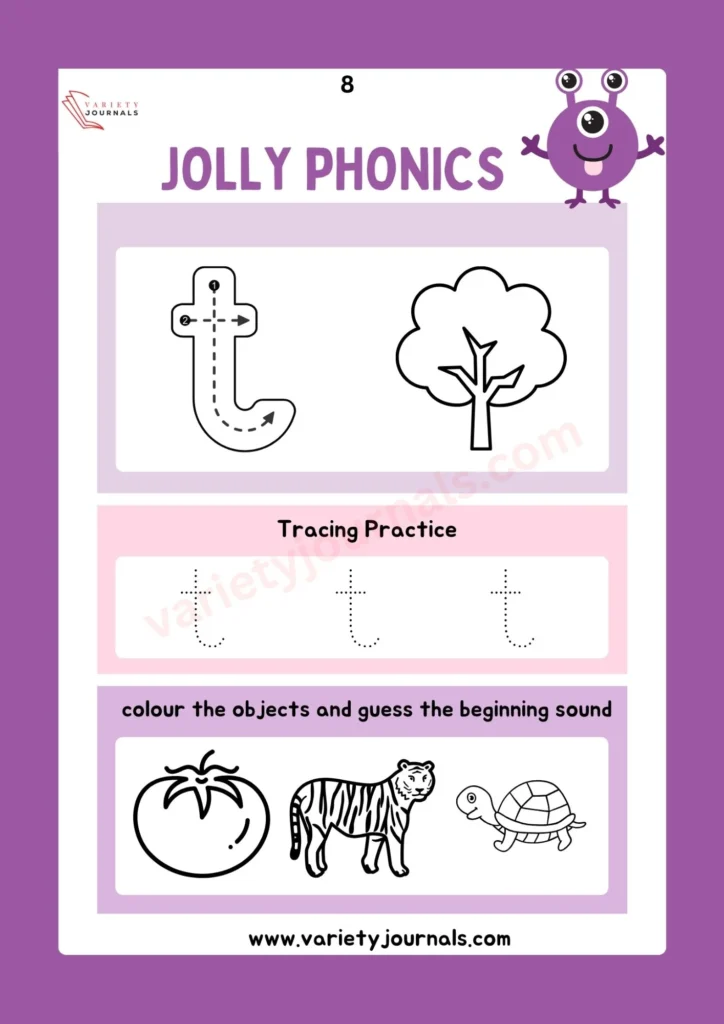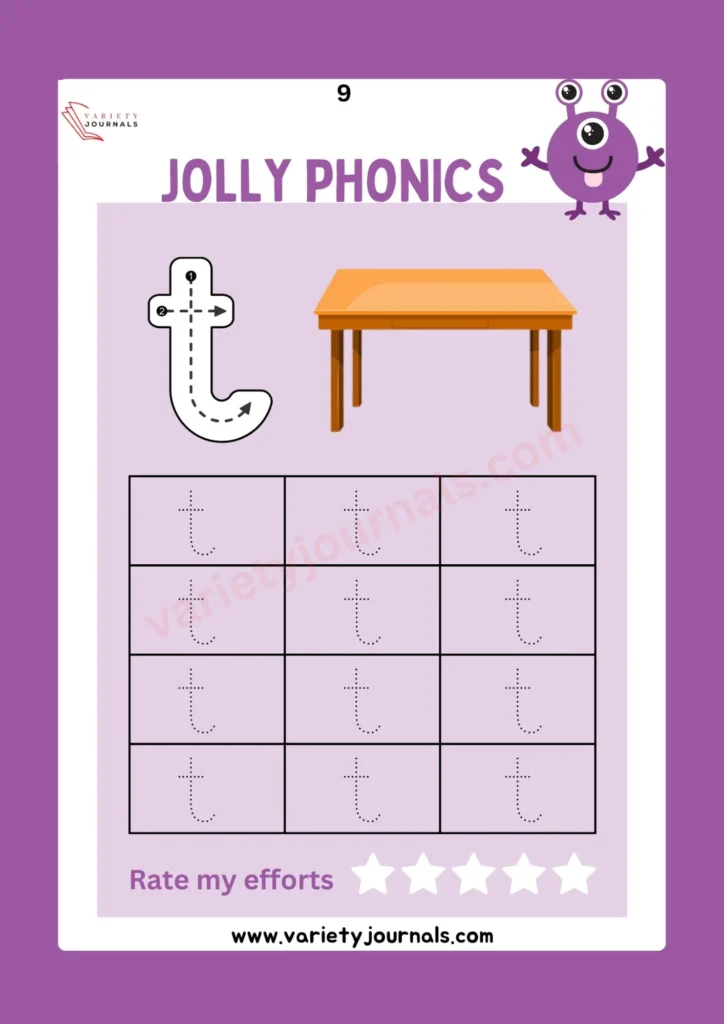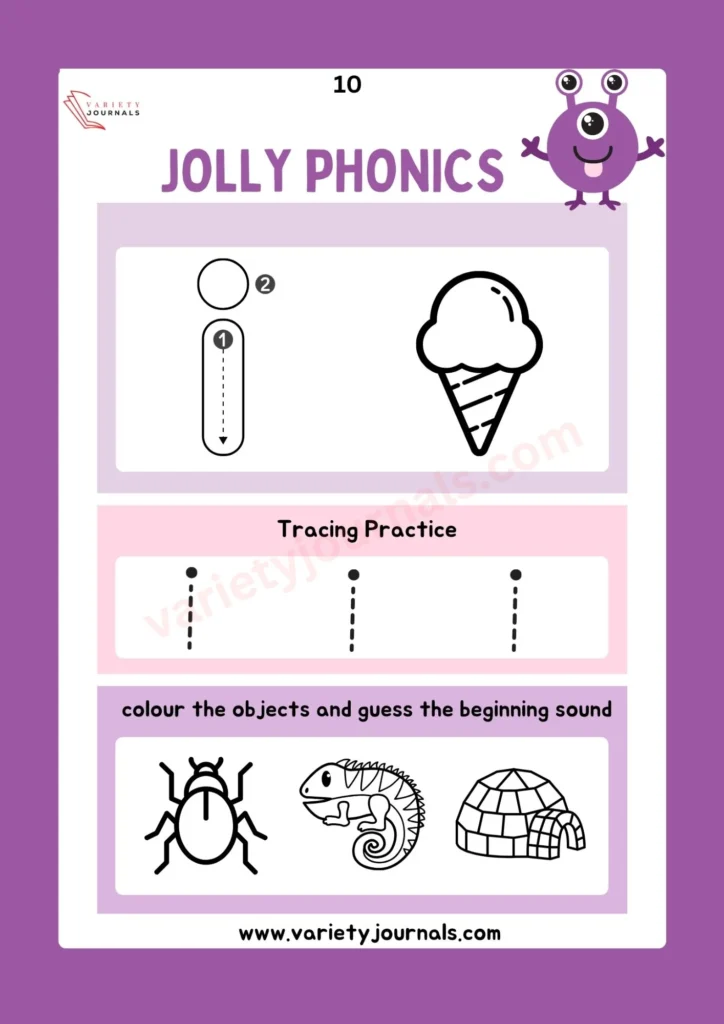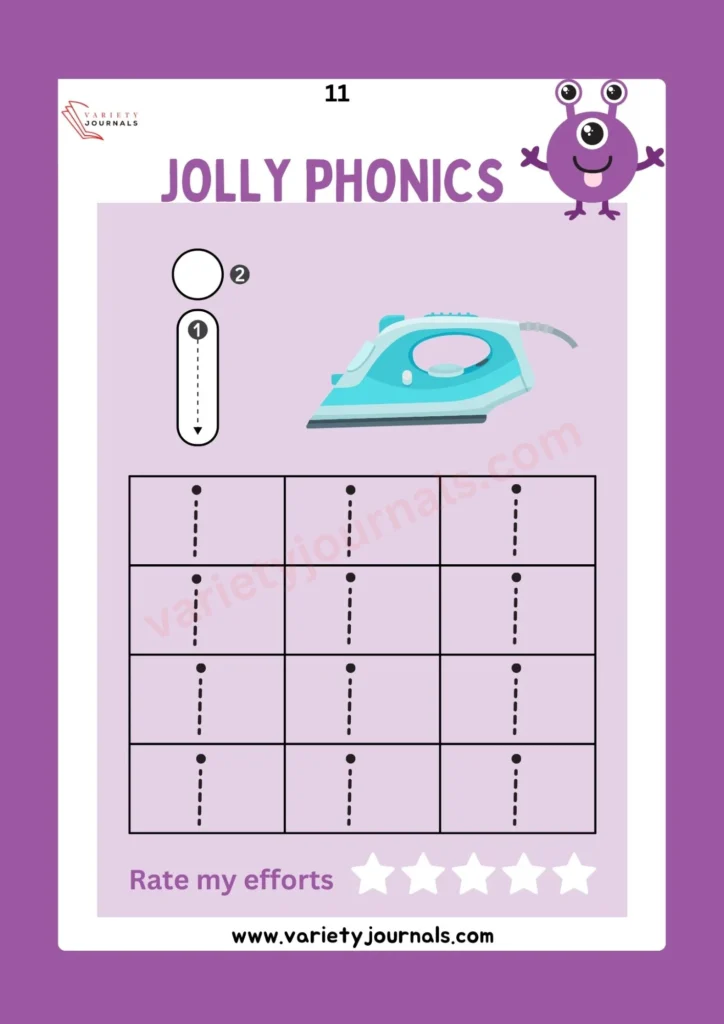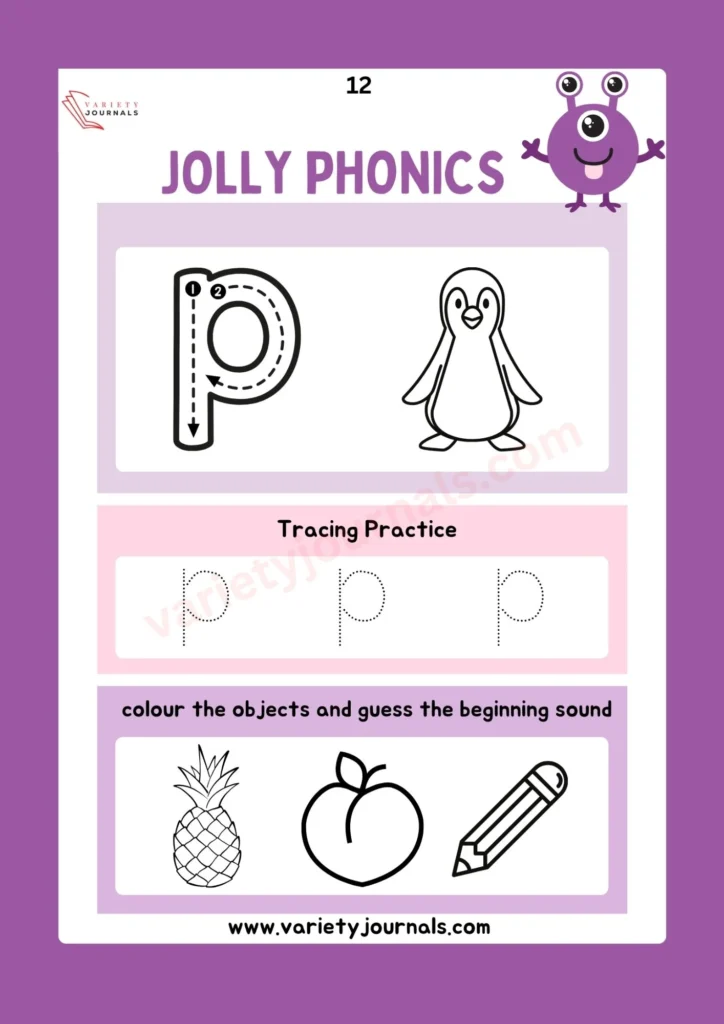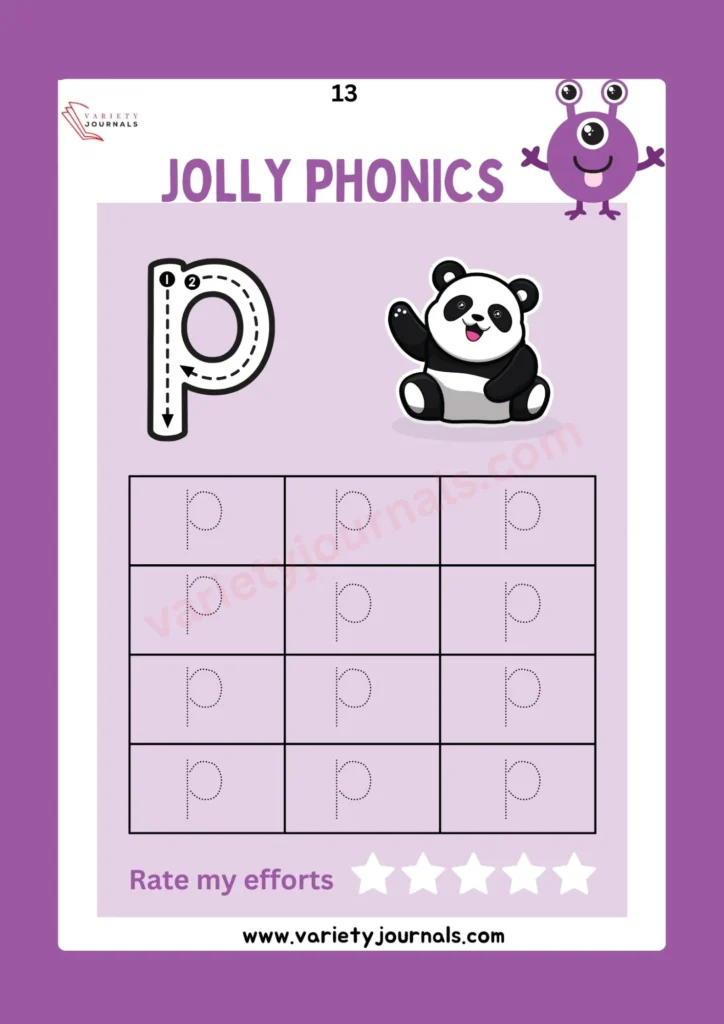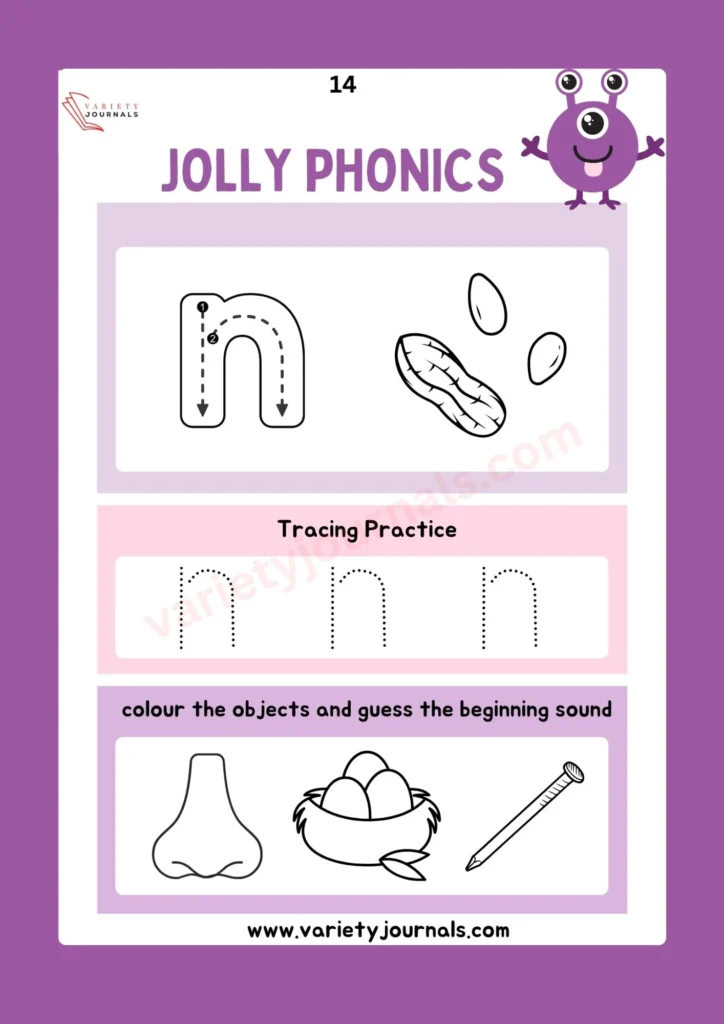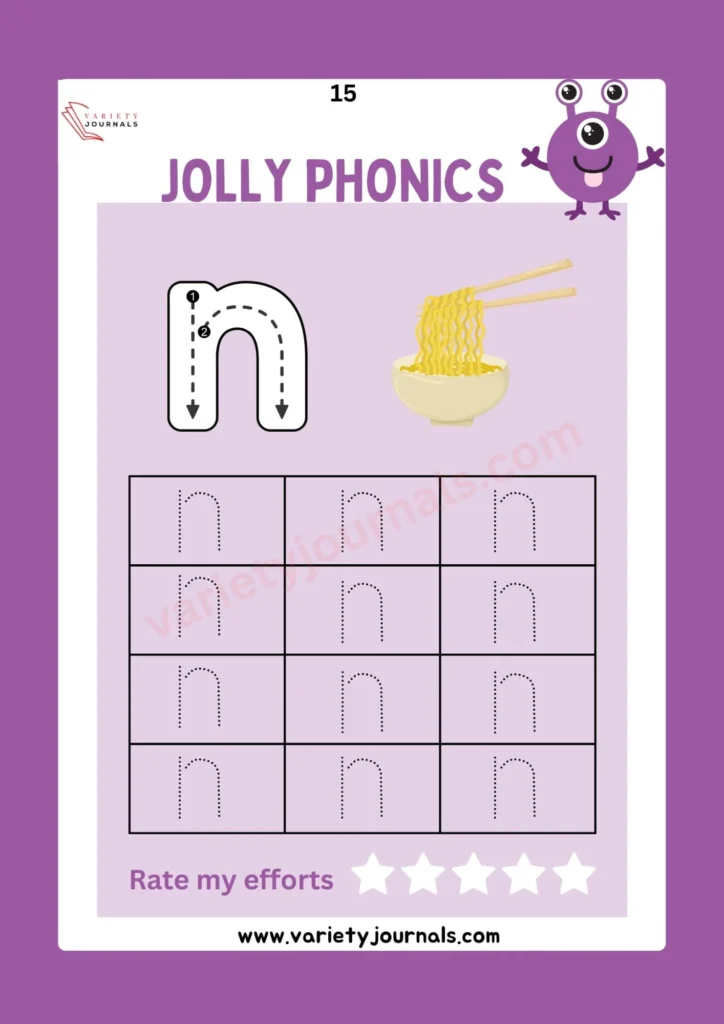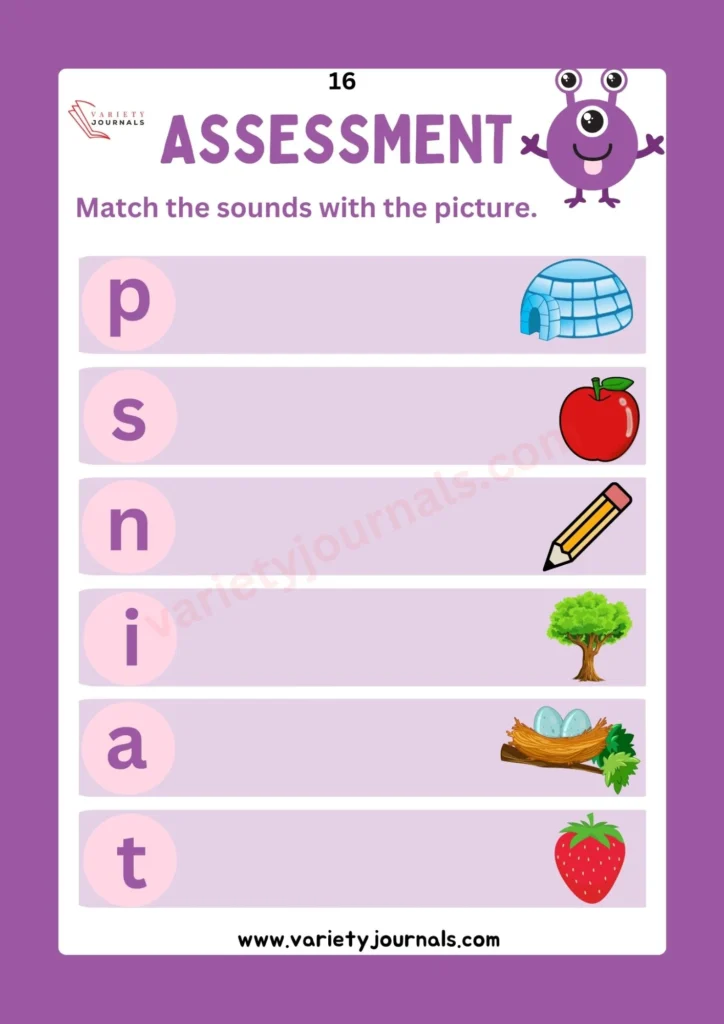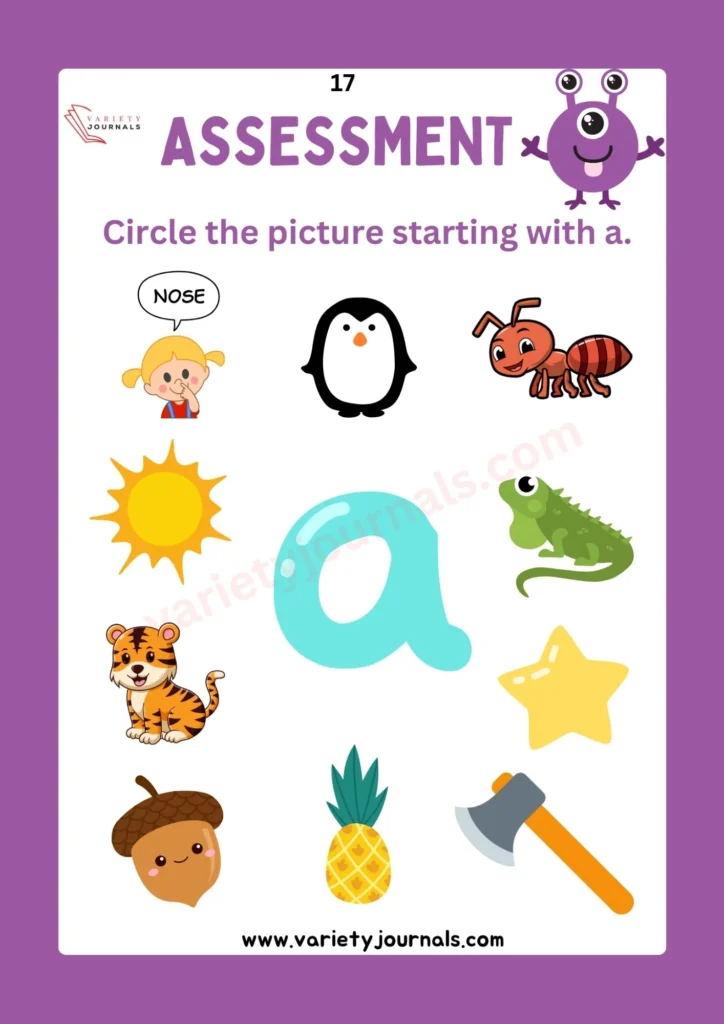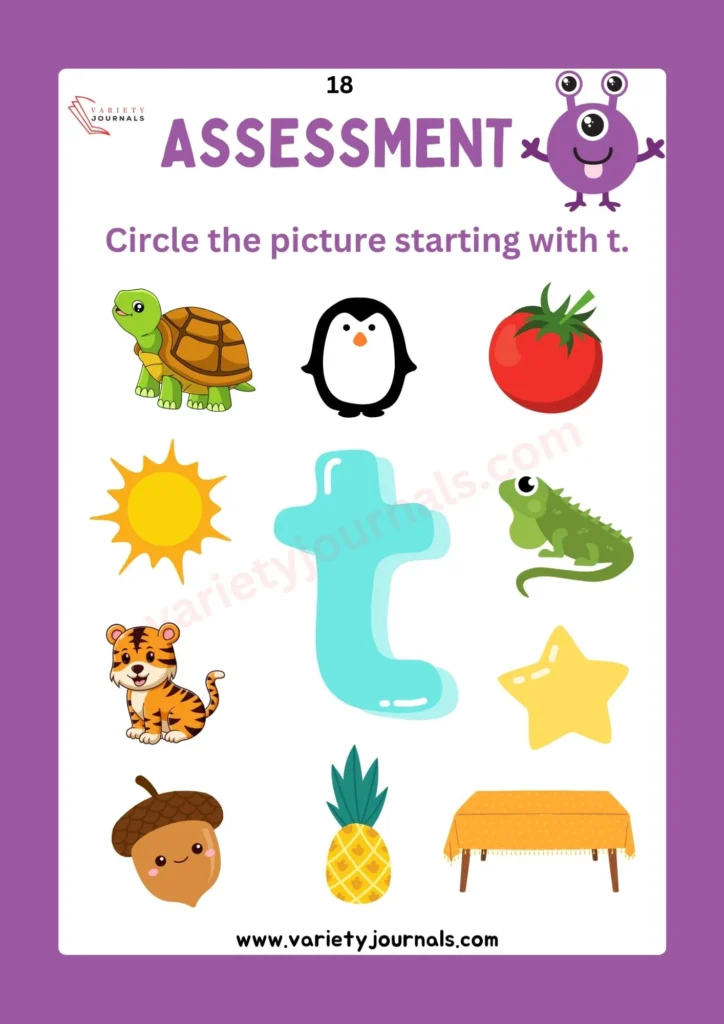Visited 10,409 times, 11 visit(s) today
Jolly Phonics Group 1 Worksheets
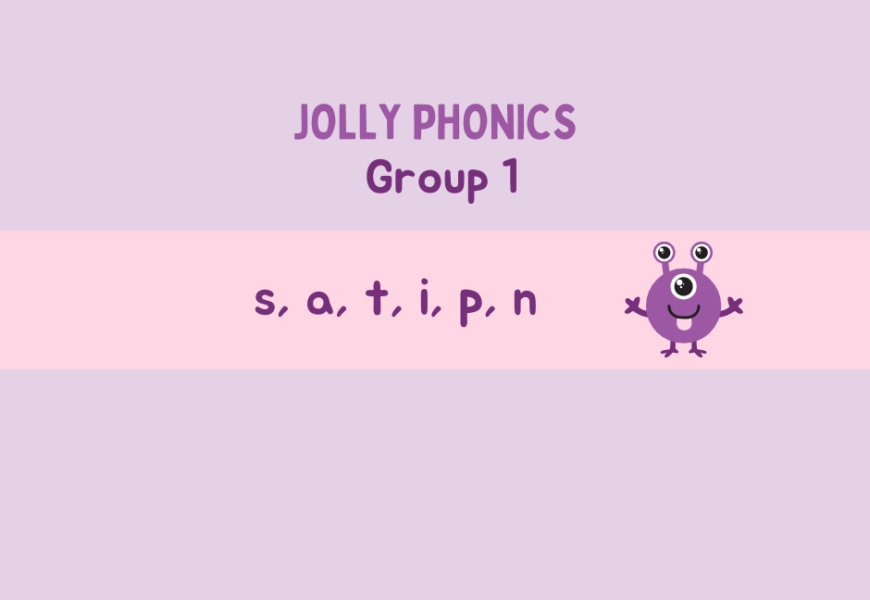

Jolly Phonics Group 1 is the initial phase of a popular and highly effective phonics program designed to teach young children how to read and write. Developed by British educator Sue Lloyd and her team, Jolly Phonics is widely used in schools, preschools, and homes around the world to lay the foundation for strong literacy skills. Group 1 is the starting point of the Jolly Phonics program and focuses on teaching children the essential phonics skills needed to begin reading and writing.
In this group, children are taught the sounds (not the names) of the letters of the alphabet. For example, they learn that ‘a’ makes the /a/ sound, ‘s’ makes the /s/ sound, and so on. This approach emphasizes the importance of teaching phonemic awareness.
The order of sound introduction in Jolly Phonics is carefully designed to provide a systematic and structured approach to phonics instruction.
The order of sound introduction in Jolly Phonics typically follows the principles of synthetic phonics, which means that students are taught the most common and useful sounds first, allowing them to quickly start building and reading simple words. While “s” is an early sound introduced in Jolly Phonics, it is not necessarily the first sound. Commonly, programs begin with the most straightforward consonant sounds, which often include “s,” “a,” “t,” “i,” “p,” and “n.”
It’s important to note that the order of sound introduction can vary between different phonics programs, but the principles of starting with common, easily blendable sounds remain consistent across many of them.
Begin with individual introductions to each sound. For “s,” explain the hissing sound it makes, similar to a snake. For “a,” emphasize the short vowel sound, like the sound when opening your mouth. For “t,” demonstrate the sound by saying it with a clear, crisp enunciation. For “i,” show how the mouth forms a smile when making this sound. For “p,” explain the popping sound, and for “n,” emphasize the soft, continuous sound it produces.
Jolly Phonics often employs actions or visual cues to help children remember sounds. For “s,” make a snake motion with your hand, for “a,” open and close your mouth like an “a,” for “t,” make a tapping motion, for “i,” create a smiley face with your fingers, for “p,” use a popping motion, and for “n,” show a nose with your fingers.
Provide words that contain these sounds, such as “sun,” “cat,” “top,” “tin,” “pen,” and “nut.” Encourage students to identify the sounds within these words.
Engage students in reading and writing exercises using words with these sounds. Encourage them to practice writing words and sentences that contain “s, a, t, i, p, and n.”
Incorporate interactive games and activities that reinforce the sounds, such as word bingo, matching games, or word hunts.
Our specially designed worksheets aim to make the learning journey for “s, a, t, i, p, and n” sounds in Jolly Phonics Group 1 both enjoyable and effective. These worksheets provide a structured, hands-on approach to learning these sounds and offer opportunities for students to practice recognizing, reading, and writing words containing these sounds. Through tracing exercises, students develop fine motor skills while reinforcing their knowledge of letter formation. The colorful and engaging design of the worksheets encourages active participation and makes learning fun.
Moreover, our worksheets align with the principles of Jolly Phonics, which emphasize multi-sensory learning, active engagement, and phonics mastery through consistent practice. They are a valuable resource for both educators and parents to support young learners in building strong phonetic and early literacy skills. By incorporating these worksheets into the learning process, students can consolidate their understanding of “s, a, t, i, p, and n” sounds, further enhancing their reading and writing capabilities. These resources provide a comprehensive and enjoyable way for children to become confident and proficient readers and writers.
